Prices in AUD. Shipping worldwide. Flat rate $8 postage per order within Australia. International by weight calculated at checkout. Read full terms.
-
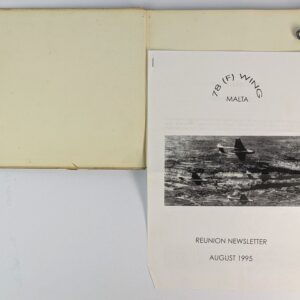
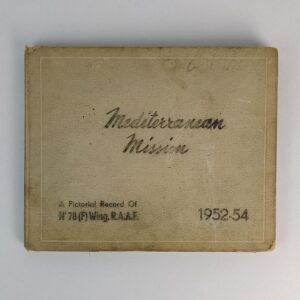
Mediterranean Mission: A Pictorial Record of No 78 (F) Wing. R.A.A.F., 1952-54
AU$300.00 Read MoreAdd to cartJack Cannon
Valetta: David Waddington Publications, No date.Pictorial history of the Royal Australian Air Force No. 78 Wing while garrisoned in Malta. This copy with a unit pin attached to the front free endpaper, the signature of one of the members of the Squadron to the front pastedown, the 78 (F) Wing Reunion Newsletter August 1995 laid in, and several post-it notes attached in places identifying a previous owner’s father in the photographs.
-
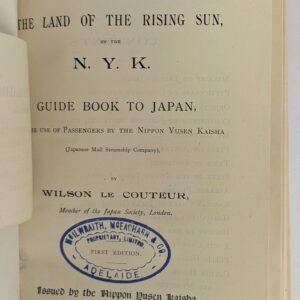
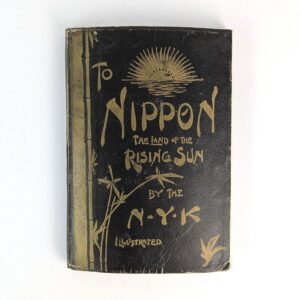
To Nippon, the Land of the Rising Sun, by the N. Y. K.
AU$500.00 Read MoreAdd to cartWilson Le Couteur
Tokyo: Nippon Yusen Kaisha, 1899.Guide Book to Japan, for the Use of Passengers by the Nippon Yusen Kaisha (Japanese Mail Steamship Company), together with a record of a journey from Australia to Japan. This copy with the tipped in slip advising of the managing Agents for Australasia and with the stamp of the Adelaide shipping company McIlwraith, McEacharn & Co.
-
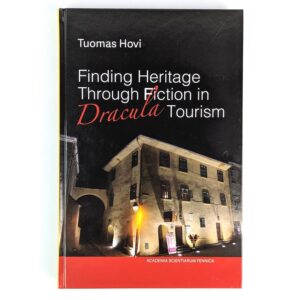
Finding Heritage Through Fiction in Dracula Tourism
AU$65.00 Read MoreAdd to cartToumas Hovi
Helskinki: Suomalainen Tiedeakatemia, 2016.Heritage and tourism have become inextricably linked. Depending on the view point, the effect of this link can be seen either negative or positive. Does tourism produce inauthentic and falsified tradition, threatening cultural heritage? Or does it, in fact, help to preserve heritage, culture and folklore in a changing and globalizing world? Tuomas Hovi investigates heritage in the context of Dracula tourism in Romania: tourists visiting places connected with either the fictional vampire Dracula or the historical Dracula, Vlad the Impaler, a 15th century Romanian ruler. How is Romanian heritage and culture presented and promoted through a seemingly superficial Dracula tourism based on Western popular fiction in Dracula tourism? Finding Heritage Through Fiction in Dracula Tourism offers new perspectives on the research literate concerning tourism and heritage, and a folkloristic view of tourism research. FF Communications No. 311 published by the Finnish Academy of Science and Letters.
-
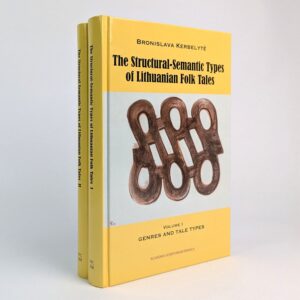
The Structural-Semantic Types of Lithuanian Folk Tales (2 Volumes)
AU$150.00 Read MoreAdd to cartBronislava Kerbelyte
Helskinki: Suomalainen Tiedeakatemia, 2015.I: Genres and Tale Types. II: The Classification and Index of Elementary Plots and Their Types. The classification system of the types of folk tales published by Antti Aarne in 1910 was a much needed and courageous project. Bronislava Kerbelyte has classified more than 40,000 variants of Lithuanian folk tales according to the international catalogue by Antti Aarne and Stith Thompson (AT). She has concluded that it is necessary to improve the classification system. Kerbelyte has determined elementary plots (EP) as structural elements for narratives and created the structural-semantic method for analysis and description of texts on several levels. The classification of elementary plots and their types contains much information about folk tales and about people. FF Communications No. 308 & 309 published by the Finnish Academy of Science and Letters.
-
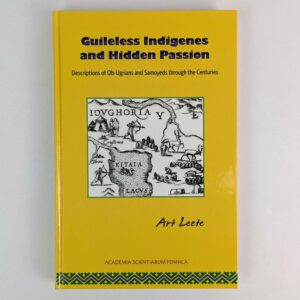
Guileless Indigenes and Hidden Passion: Descriptions of Ob-Ugrians and Smoyeds through the Centuries
AU$80.00 Read MoreAdd to cartArt Leete
Helskinki: Suomalainen Tiedeakatemia, 2014.This monograph is aimed for discussing the views of the character of the Khanty, Mansi and Nenets by authors of different periods. Changes of general ideas about the inhabitants of the Arctic has had a remarkable, albeit often concealed, role in the development of the research on northern peoples. The author examines the image of northern peoples beginning from ancient Greek and Roman accounts of peoples, medieval sources, modern travel journals and ends up with the analyses of contemporary scholarly writings. The book is an attempt to explore the general background of ideas and the scientific methodology that frames changes in this knowledge about the peoples of the North. The theoretical framework of this monograph is related to the dialogue between modern theories of identity and the historical modes of description. FF Communications No. 306 published by the Finnish Academy of Science and Letters.
-
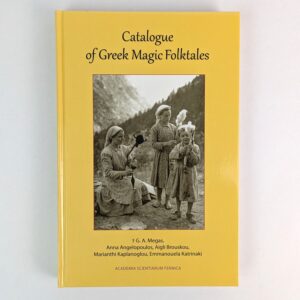
Catalogue of Greek Magic Folktales
AU$80.00 Read MoreAdd to cartG. A. Megas; Anna Angelopoulos; Aigli Brouskou; Marianthi Kaplanoglou; Emmanouela Katrinaki
Helskinki: Suomalainen Tiedeakatemia, 2012.The collected texts cover a period of more than a century of recordings (from the second half of the nineteenth century up to the mid-1970s) and geographically cover not only the entire Greek territory and Cyprus but also other areas where Greek populations live(d) and Greek cultures thrive(d) (Asia Minor, Pontus, Cappadocia, Southern Italy). Georgios A. Megas drafted the first catalogue, gathering and indexing all published and unpublished Greek folktale versions, so that the number of texts finally exceeded 23 000. A group of specialists continued for nearly 30 years carrying this project, consulting, classifying, and commenting G. Megas’ handwritten card indexes, and finally editing this rich material, scattered in public and private archives. FF Communications No. 303 published by the Finnish Academy of Science and Letters.
-
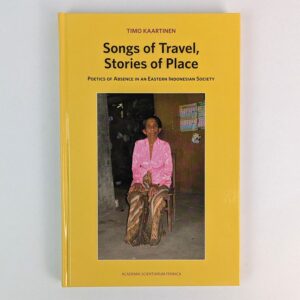
Songs of Travel, Stories of Place: Poetics of Absence in an Eastern Indonesian Society
AU$50.00 Read MoreAdd to cartTimo Kaartinen
Helskinki: Suomalainen Tiedeakatemia, 2010.This book explores the narratives of people who trace their origin to Banda, the famous Nutmeg Islands of Eastern Indonesia. They were displaced from their ancient homeland by the Dutch colonization of Banda in 1621 and carry on their language and traditions in the village described in this study. The Bandanese continue travelling to distant places in pursuit of recognition by their ancestral allies. They bring their past into life through rituals and verbal arts which commemorate absent travelers and anticipate their return. This book argues that ethno-history can be a source of exemplary acts which inform collective responses to new circumstances. The folk poetry of the Bandanese places real, historical events in several chronotopic frameworks in which they are relived as memory and given a total meaning as history. FF Communications No. 299 published by the Finnish Academy of Science and Letters.
-
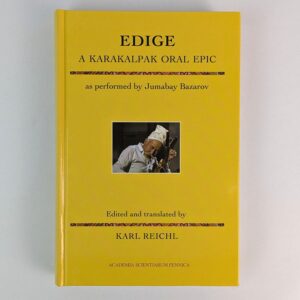
Edige: A Karakalpak Oral Epic as performed by Jumabay Bazarov
AU$80.00 Read MoreAdd to cartKarl Reichl
Helskinki: Suomalainen Tiedeakatemia, 2007.Edige is one of the most esteemed oral epics of the Karakalpaks, a Turkic-speaking people, who live on the mouth of the Amu Darya and the shores of the Aral Sea. Edige is a historical personage from the time of Timur at the turn of the 14th to the 15th century. The singer, Jumabay Bazarov, was the last Karakalpak singer of heroic epics who stood in an entirely oral tradition. In this edition and translation an attempt has been made to capture as much of his oral performance as possible, including the singer’s dialect features and his musical style. FF Communications No. 289 published by the Finnish Academy of Science and Letters.
-
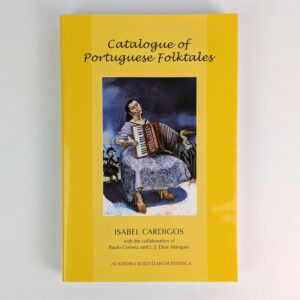
Catalogue of Portuguese Folktales
AU$60.00 Read MoreAdd to cartIsabel Cardigos; Paul Correia; J. J. Dias Marques
Helskinki: Suomalainen Tiedeakatemia, 2006.In the old Aarne / Thompson, Portugal was virtually non-existent, appearing in the bibliography of just three folktales. In 2003, the author of The Types of International Folktales stretched his hand to the first manuscript of the Catalogue of Portuguese Folktales and included them in 700 types of his own manuscript. The Catalogue of Portuguese Folktales is now the first regional index that takes into account the classifications of the new ‘ATU’. But it displays its difference by electing its own affinities with old ‘AT’ numbers, with regional catalogues, or even by offering new numbers. We can see a new face of the European folktale emerging, with a strong Mediterranean flavour. FF Communications No. 291 published by the Finnish Academy of Science and Letters.
-

Moral Fictions: Tamil Folktales in Oral Tradition
AU$80.00 Read MoreAdd to cartStuart Blackburn
Helskinki: Suomalainen Tiedeakatemia, 2001.Is fantasy the defining element in fairy tales? This question is the starting point for Stuart Blackburn’s study of Tamil oral tales. Having collected over 300 tales, 100 of which are translated in this book, he concludes that although fantasy, and humour, are present, at the core of the tales lies a moral vision in which wrongdoing, especially physical cruelty, is punished. Only the second full-length study of Indian tales from oral tradition, this book places the Tamil tradition in an international context, describes the telling sessions and includes tellers’ interpretations of some tales. FF Communications No. 278 published by the Finnish Academy of Science and Letters.
-
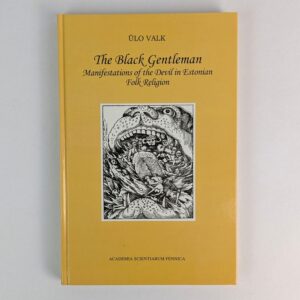
The Black Gentleman: Manifestations of the Devil in Estonian Folk Religion
AU$50.00 Read MoreAdd to cartUlo Valk
Helskinki: Suomalainen Tiedeakatemia, 2000.This empirical study of the Devil in the collections of the Estonian Folklore Archives, reflecting the world of belief inhabited by the Estonians in the 19th and 20th centuries, is also a book about suspicion and fear in everyday life. It describes how religious folklore has drawn borders between the human and the non-human, how it has modelled the Other, the supernatural and social evil. As a study of folk narrative, and legends in particular, it mainly discusses variation at the level of motif with special reference to the visual guises of the Devil. FF Communications No. 276 published by the Finnish Academy of Science and Letters.
-
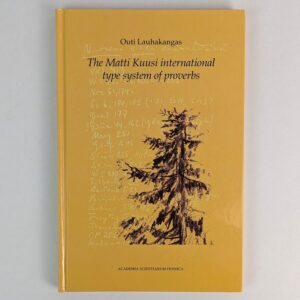
The Matti Kuusi International Type System of Proverbs
AU$40.00 Read MoreAdd to cartOuti Lauhakangas
Helskinki: Suomalainen Tiedeakatemia, 2000.From 1965 to 1974 Matti Kuusi was editor-in-chief of the famous journal Proverbium and invited proverb scholars to contribute to this forum. During this period he began to keep a card index of literature references to proverb types and made his first experiment in the thematic classification of international proverb materials in the 1970s. This volume is a study of the development of this type system. Outi Lauhakangas attempts to show how her father’s practical dream of a common international reference code came to be realised. The reader will find a list of some 700 global or almost global proverb motifs and can access the database via the website of The Finnish Literature Society. FF Communications No. 275 published by the Finnish Academy of Science and Letters.
-
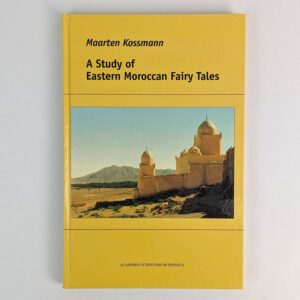
A Study of Eastern Moroccan Fairy Tales
AU$40.00 Read MoreAdd to cartMaarten Kossmann
Helskinki: Suomalainen Tiedeakatemia, 2000.This book studies the structure and style of orally transmitted fairy tales from Eastern Morocco in Berber and dialectal Arabic. Drawing on materials collected in his own fieldwork and other sources, the author pays special attention to the aesthetics of the fairy tale as understood by Max Lüthi and to the analysis of tale-specific formulae. Two hitherto unpublished Figuig Berber fairy tales are appended, as is a comparison of two versions of an Eastern Riffian story which, though collected independently at an interval of 60 years, show remarkable similarities. FF Communications No. 274 published by the Finnish Academy of Science and Letters.
-
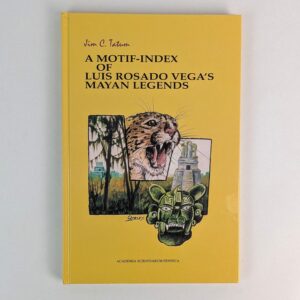
A Motif-Index of Luis Rosado Vega’s Mayan Legends
AU$40.00 Read MoreAdd to cartJim C. Tatum
Helskinki: Suomalainen Tiedeakatemia, 2000.The Mayan Culture, long recognised as among the most advanced indigenous groups of Latin America, possesses a rich heritage of mythology and traditions still very apparent in the Yacatan Peninsula at the closing of the twentieth century. Although Mayan legends have been studied and published as early as 1844, there exists no extensive motif-index dealing with the topic. This work attempts to help fill that need by indexing the works of Yacatecan writer Luis Rosaldo Vega. FF Communications No. 271 published by the Finnish Academy of Science and Letters.
-
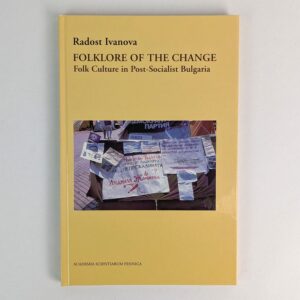
Folklore of the Change: Folk Culture in Post-Socialist Bulgaria
AU$40.00 Read MoreAdd to cartRadost Ivanova
Helskinki: Suomalainen Tiedeakatemia, 1999.The book analyses the developments taking place in Bulgaria in the years following November 10, 1989. The dynamics of the political and socio-economic changes in that period are comparable only to the most extreme periods of Bulgaria’s history. This study is not a political analysis. It is an attempt to follow the changes in people’s mentality. This book documents the enthusiasm of the negation of a chimera lasting half a century and the euphoria of the search for new roads. The volume consists of eight studies, seven of which deal with the democratic processes and developments in Sofia. FF Communications No. 270 published by the Finnish Academy of Science and Letters.
-

In and Out of Enchantment: Blood Symbolism and Gender in Portuguese Fairytales
AU$60.00 Read MoreAdd to cartIsabel Cardigos
Helskinki: Suomalainen Tiedeakatemia, 1996.The core of fairytales is the realm of enchantment. This study argues that the bloodshed associated with menstruation, defloration and childbirth–natural episodes in the lifecycle of women–is central to a syntax of enchantment and disenchantment that is common to all fairytales. It is a reflection on the gendered voices that have generated and contributed to the structure and symbolism of fairytales; and it takes shape along with the discussion of Portuguese versions of wide-spread tale types like AT303 (The Two Brothers), AT313 (The Girl as Helper in the Hero’s Flight and AT516 (Faithful John), as well as through an intriguing ecotype of Snake Helper tales (AT533*), ‘The Little Snake’. FF Communications No. 260 published by the Finnish Academy of Science and Letters.
-

The Tales of the Ploughwoman
AU$40.00 Read MoreAdd to cartMarisa Rey-Henningsen
Helskinki: Suomalainen Tiedeakatemia, 1996.Appendix to FFC 254. FF Communications No. 259 published by the Finnish Academy of Science and Letters.
-
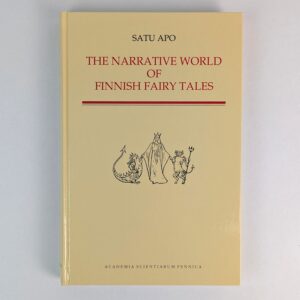
The Narrative World of Finnish Fairy Tales
AU$60.00 Read MoreAdd to cartSatu Apo
Helskinki: Suomalainen Tiedeakatemia, 1995.Finnish fairy tales represent the northern branch of the Western European fairy-tale tradition. Although Finnish epic folklore and mythology have been objects of great research interest, Finnish fairy tales have been studied surprisingly little. This study answers not only methodological but also the most important empirical questions, such as: what are the themes, plots and characters which have been able to entertain both fairy-tale tellers and their listeners from one generation to the next? How can these contentual elements be understood and interpreted within the framework of traditional Finnish folk culture? /// The methodological issues dealt with here include the question of how to approach traditional folklore material recorded in the 1800s, of which there is an enormous amount but very little accompanying contextual information. In order to analyse the contents of the tales, this study suggests the use of several semantic levels of abstraction as well as the systematic analysis of variation; only then is it feasible to present macrocontextual, interpretive hypotheses in which narrative and cultural structures are examined side by side. FF Communications No. 256 published by the Finnish Academy of Science and Letters.
-
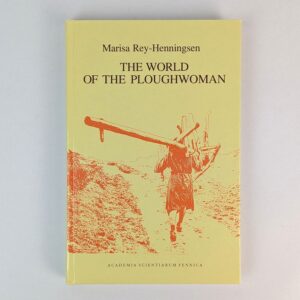
The World of the Ploughwoman: Folklore and Reality in Matriarchal Northwest Spain
AU$60.00 Read MoreAdd to cartMarisa Rey-Henningsen
Helskinki: Suomalainen Tiedeakatemia, 1993.This study is a contribution to the discussion of folklore as a mirror of society. Spanish Galicia offers a special opportunity for examining wellknown folktales in a different context because of the cultural and economic dominance of women and the matriarchal life style which characterized the region until recently. That matriarchy was deeprooted in Galicia and did not result from male migration in modern times, is demonstrated in the historical chapters of the book, while the anthropological chapters (on family systems, work patterns, matriarchal ideology, sexual behaviour, religion and magic) tend to show that all aspects of Galician culture have been “canonized” in folklore; folklore therefore must have gone through radical changes in order to conform with the local ideology. While the women in Galician folktales almost always appear in active and aggressive hero roles, this has nothing to do with “wishful thinking” or “poetic fiction”, for according to the matriarchal concept it is just the natural order of things. Surely the correlation demonstrated here between the social structure, gender roles, and ideology may also be observed in male-dominated societies, once we learn to disengage from the patriarchal concept of the “natural order of things”. FF Communications No. 254 published by the Finnish Academy of Science and Letters.
-

A List of Motifs in the Lives of the Early Irish Saints
AU$30.00 Read MoreAdd to cartDorothy Ann Bray
Helskinki: Suomalainen Tiedeakatemia, 1992.An identifying, classifying and documenting list of the themes of early medieval Irish saint biographies. FF Communications No. 252 published by the Finnish Academy of Science and Letters.
